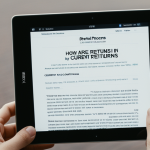Essential Ingredients and Tools for a Perfect Battenberg Cake
Precision matters from the first step
To craft an authentic Battenberg cake, start with traditional Battenberg cake ingredients in exact amounts: 225g unsalted butter, 225g caster sugar, 4 large eggs, 225g self-raising flour, 1 tsp baking powder, 1 tbsp milk, red food colouring, and about 250g marzipan for wrapping. Precise quantities ensure the sponge texture is light and uniform, crucial for the checkerboard pattern.
This might interest you : How can you recreate the flavors of a classic British afternoon tea?
Specialised tools simplify the process and improve results. A Battenberg tin—typically rectangular and shallow—is essential for even sponge thickness. Using parchment paper lines the tin to prevent sticking and helps lift the batter smoothly after baking. A sharp knife with a ruler aids in cutting the sponge into exact strips, pivotal for symmetry.
Accurate precise measurements cannot be overstated. Baking is a science; slight deviations in sugar or flour alter rise and crumb. Use digital scales for weight-based accuracy, and measure liquids like milk with clear measuring jugs. This attention to detail lays the foundation for achieving Battenberg’s characteristic neatness and texture.
This might interest you : How Do Traditional British Dishes Reflect the Culture and History of the UK?
Step-by-Step Classic Battenberg Cake Assembly
Creating the iconic checkerboard with precision
Begin the Battenberg cake recipe by dividing the sponge mixture evenly to ensure consistency in texture and rise. Use exact portions of batter: two equal parts for the plain yellow sponge and two for the pink-tinted sponge, dyed precisely with red food colouring for a balanced hue. This division guarantees the signature pink-and-yellow checkerboard.
Once baked, cut each sponge carefully into uniform strips using sharp knives and a ruler, reinforcing the importance of precise measurements. Precision here directly affects the cake’s neat pattern. Arrange the strips alternating pink and yellow, bonding them with a thin layer of apricot jam, which acts as an edible glue to hold the layers firmly without sogginess.
Maintaining structure is vital during assembly. Press the sponge strips gently, avoiding crushing but ensuring they adhere well. The jam also sharpens the interface for a visually crisp checkerboard effect, a hallmark of an authentic Battenberg cake. This step-by-step guide demands patience and accuracy, rewarding bakers with the classic pattern that delights both eyes and taste buds.
Mastering Marzipan Wrapping Techniques
The final touch that defines a perfect Battenberg
Applying marzipan neatly is essential for a smooth cake finish that complements the Battenberg’s checkerboard charm. Start by rolling the marzipan evenly on a surface dusted lightly with icing sugar to prevent sticking. Aim for a sheet just thick enough to cover the cake without excess bulk—about 3mm is ideal. This balance ensures flexibility and a polished appearance.
When wrapping, position the marzipan over the chilled assembled sponge to avoid tearing or stretching. Gently smooth it down with your hands or a fondant smoother, working from the center outwards to eliminate air bubbles. Pay attention to corners; trimming the marzipan with a sharp knife before folding reduces wrinkling and maintains clean lines.
Securing the marzipan requires finesse. Lightly brush the sponge edges with warmed apricot jam or water to help the marzipan adhere firmly. Avoid excessive moisture, which can cause sogginess or marzipan tears during setting. Let the wrapped cake rest briefly to allow the marzipan to settle and harden slightly, resulting in a professional look with firm edges and a flawless surface—a hallmark of a truly successful Battenberg cake.
Baking Times, Temperatures, and Troubleshooting
Bright ideas for a flawless bake
The best oven temperature for baking a Battenberg cake is 180°C (350°F) on a conventional setting. This moderate heat encourages even rising and a fine crumb. Bake the sponge for approximately 25–30 minutes, but begin testing for doneness at 20 minutes to avoid overcooking. Use a skewer inserted into the sponge’s centre; it should emerge clean, signaling the cake is cooked through.
Common issues arise despite careful preparation. Uneven rise may result from overmixing batter or inaccurate oven temperature—verify your oven’s calibration and avoid excessive stirring. A dry sponge often indicates overbaking; to maintain cake moisture, promptly remove it from the tin and cool on a wire rack.
Marzipan cracking is a frequent challenge. This usually happens when marzipan wraps a warm cake or becomes too dry. Allow the cake to cool fully before wrapping, and store the finished Battenberg in an airtight container to preserve marzipan softness. Applying a thin layer of apricot jam before wrapping also helps maintain moisture, reducing cracks.
Troubleshooting effectively ensures consistent moisture, texture, and appearance—key for a truly authentic Battenberg cake.
Essential Ingredients and Tools for a Perfect Battenberg Cake
Begin with the right foundation
The Battenberg cake ingredients must be precise to achieve the classic flavour and texture. Use 225g unsalted butter, 225g caster sugar, 4 large eggs, 225g self-raising flour, 1 teaspoon baking powder, 1 tablespoon milk, red food colouring, and approximately 250g marzipan. Accurate ratios are crucial; too much or too little of any ingredient alters the sponge’s rise, crumb, and colour.
Essential baking tools simplify the process and ensure quality. A Battenberg tin, usually rectangular and shallow, guarantees even baking and a consistent sponge thickness. Lining the tin with parchment paper prevents sticking and allows for easy removal of the delicate sponges. Additionally, a sharp knife and ruler are indispensable for dividing the baked sponge into exact strips, critical for the checkerboard pattern.
Precise measurements underpin every step. Digital kitchen scales provide accuracy in weighing dry and wet ingredients. Measuring liquids with clear jugs ensures consistent batter texture. Combining precise ingredient quantities with specialised tools builds the basis for an authentic, visually striking, and delicious Battenberg cake every time.










